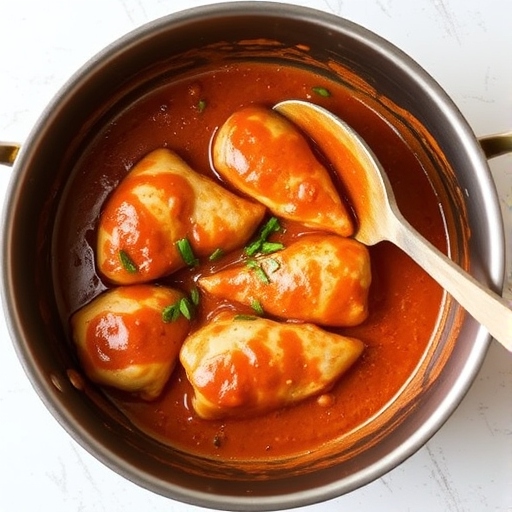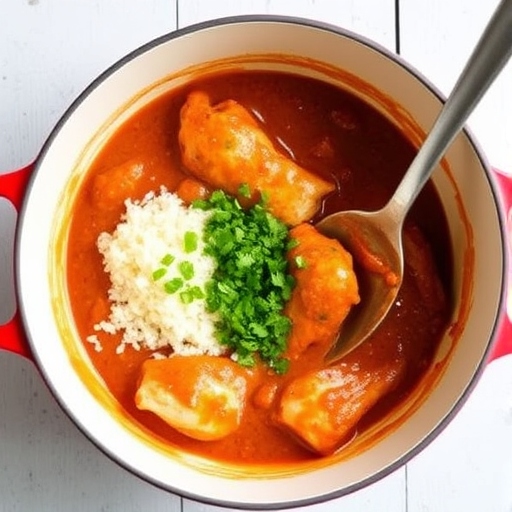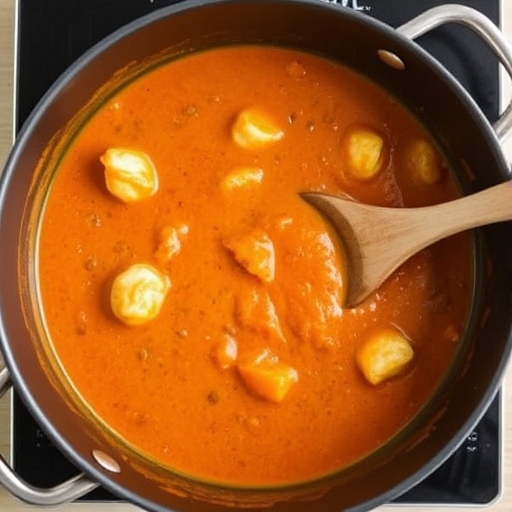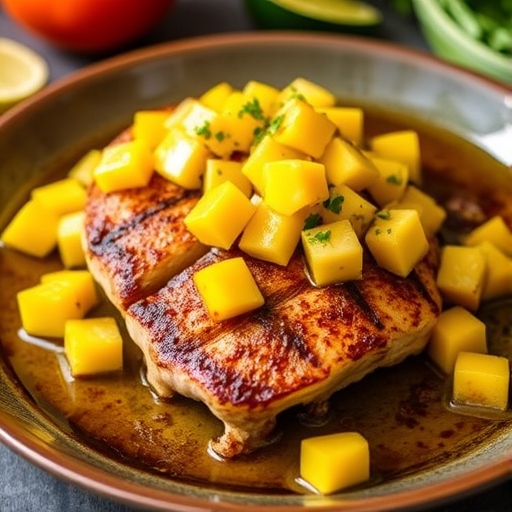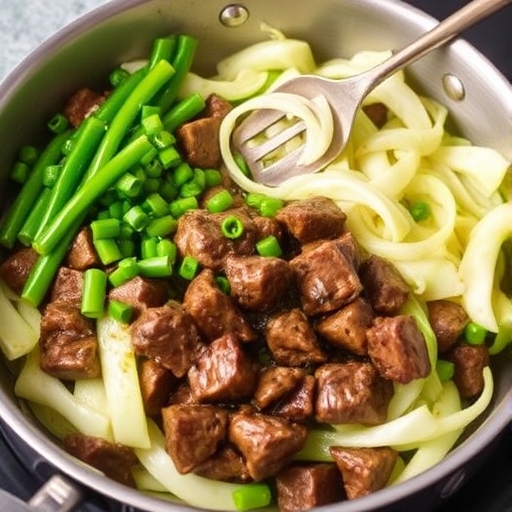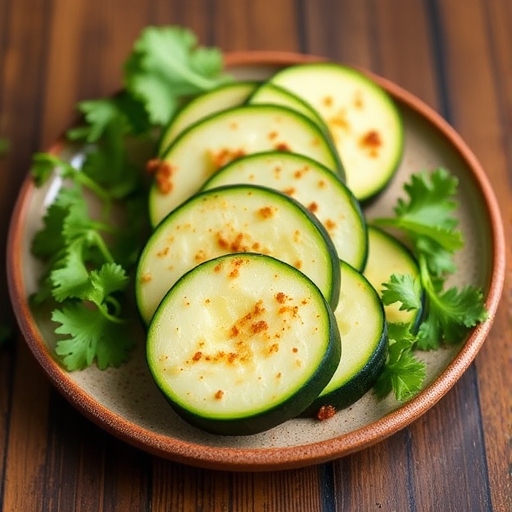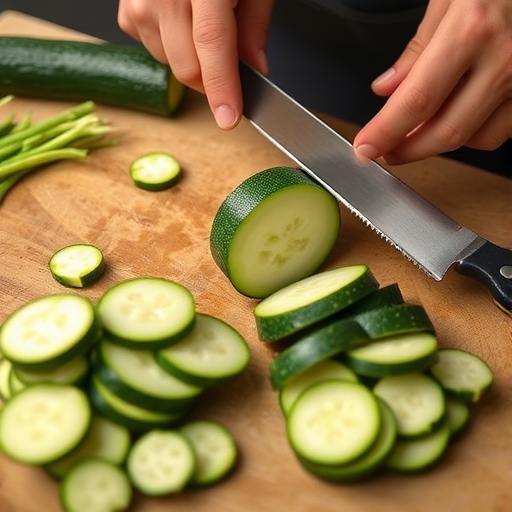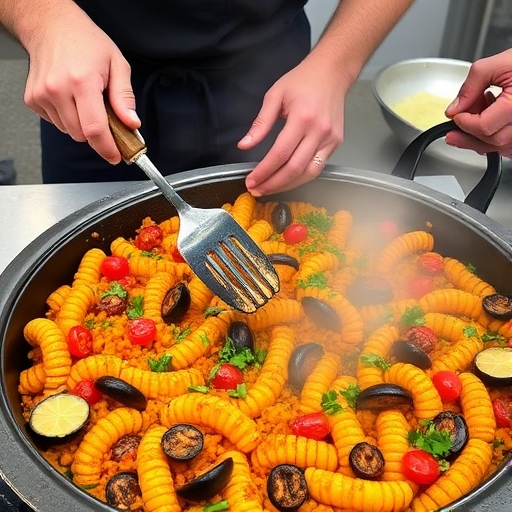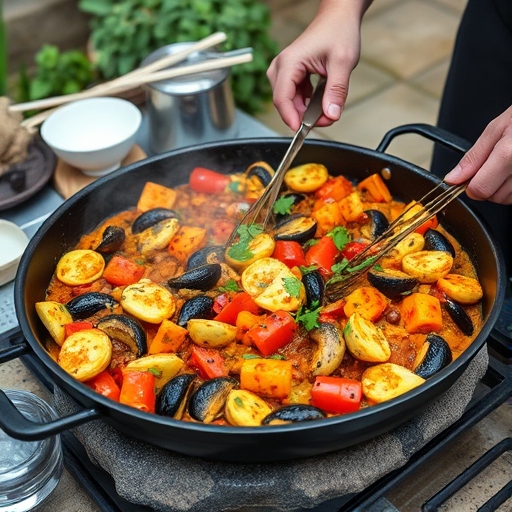Introduction
A delightful blend of tender seafood, zesty Cajun seasoning, and creamy pasta, the Cajun Seafood Pasta is a dish that encapsulates the vibrant flavors of the South. With the perfect balance of spice and creaminess, this recipe brings a taste of the bayou to your table. Whether you’re hosting a dinner party or simply enjoying a weeknight meal, this dish is sure to impress with its bold flavors and satisfying texture.
Table of Contents
1. The Story Behind Cajun Seafood Pasta
Cajun cuisine originates from the heart of Louisiana, rooted in French, African, and Spanish culinary traditions. It is known for its robust and spicy flavors, often combining seafood, meats, and vegetables with a unique blend of spices. Seafood is a staple in Cajun cooking, especially in coastal regions where fresh fish and shellfish are abundant.
Cajun Seafood Pasta was born from this rich tradition, marrying the Southern love for pasta with the region’s famous seafood. It’s a dish that reflects the heart and soul of Louisiana, offering a creamy, spicy experience that satisfies both heat-lovers and seafood enthusiasts alike.
2. The Benefits of Making Your Own Cajun Seafood Pasta
Making Cajun Seafood Pasta at home allows you to customize the flavors and adjust the spice levels to your preference. The benefits include:
- Freshness: You can choose the freshest seafood available, whether it’s shrimp, scallops, or a mix of your favorites.
- Control over Ingredients: You control the amount of cream, butter, and seasoning, ensuring a healthier, lighter version if desired.
- Cost-Effective: Preparing this dish at home saves you money compared to dining out at a restaurant.
- Creative Flexibility: You can experiment with various seafood combinations and add vegetables to suit your taste.
3. Essential Ingredients for the Perfect Cajun Seafood Pasta
To achieve the perfect balance of flavors in your Cajun Seafood Pasta, gather these key ingredients:
- Seafood: Shrimp and scallops are the most popular choices, but feel free to add crab meat or lobster for extra richness.
- Pasta: Fettuccine or linguine works best, as the wide noodles hold the sauce well.
- Heavy Cream: To create a rich, velvety sauce.
- Cajun Seasoning: A blend of paprika, cayenne pepper, garlic powder, onion powder, thyme, and oregano.
- Butter: Adds a rich, smooth base to the sauce.
- Garlic: Fresh garlic enhances the depth of flavor.
- Olive Oil: For sautéing the seafood and vegetables.
- Parmesan Cheese: A sprinkling of grated Parmesan adds saltiness and depth to the dish.
4. Cultural History of Ingredients
- Cajun Seasoning: The foundation of Cajun cuisine, this spice mix has roots in French Acadian immigrants who settled in Louisiana. It evolved to include local ingredients such as cayenne, paprika, and thyme.
- Seafood: Louisiana’s rich coastal waters make seafood, particularly shrimp and oysters, central to Cajun cooking. The Gulf of Mexico is abundant with fresh fish and shellfish, making seafood a cornerstone of the region’s cuisine.
- Pasta: While pasta is traditionally Italian, the integration of pasta into Cajun cuisine reflects the influence of European immigrants in the region. The combination of pasta with rich sauces and bold spices is a testament to the diverse culinary influences in Louisiana.
5. Equipment You’ll Need
- Large Skillet or Sauté Pan: For cooking the seafood and preparing the sauce.
- Large Pot: To boil the pasta.
- Colander: To drain the pasta once cooked.
- Wooden Spoon or Tongs: For stirring the pasta and seafood.
- Lemon Zester or Grater: For fresh lemon zest, if desired.
6. Step-by-Step Instructions for Cajun Seafood Pasta
- Cook the Pasta: Begin by boiling a large pot of salted water. Add the pasta and cook until al dente, following the package instructions. Drain the pasta and set it aside, reserving some of the pasta water for the sauce.
- Prepare the Seafood: Pat your shrimp and scallops dry with a paper towel. Season them generously with Cajun seasoning, salt, and pepper.
- Cook the Seafood: In a large skillet, heat olive oil over medium-high heat. Add the seafood and sauté for about 2-3 minutes per side until they’re cooked through and lightly browned. Remove the seafood from the skillet and set it aside.
- Make the Sauce: In the same skillet, add butter and let it melt. Sauté garlic for about 1 minute until fragrant. Add the heavy cream and a bit of pasta water, stirring until the cream thickens and the sauce becomes smooth.
- Combine the Ingredients: Add the cooked pasta to the skillet with the sauce. Stir to coat the pasta evenly in the creamy sauce.
- Add the Seafood: Gently fold the cooked seafood into the pasta and sauce, allowing it to warm through.
- Finish and Serve: Serve the dish with freshly grated Parmesan, a sprinkle of fresh parsley, and a squeeze of lemon juice for added freshness.
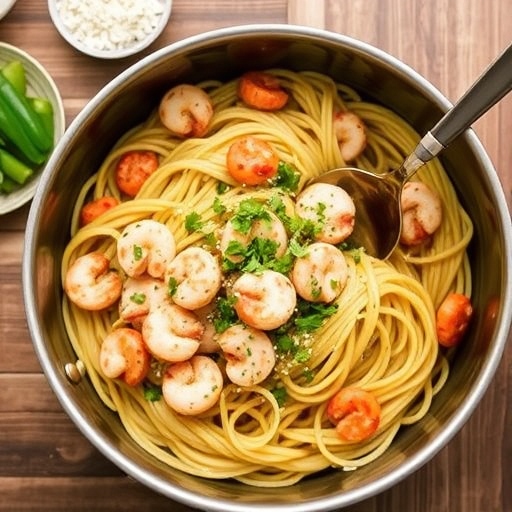
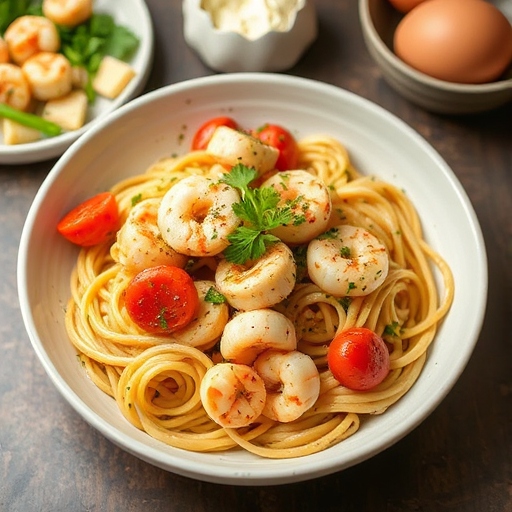
7. Suggestions for Serving and Storing
- Serving: Garnish your Cajun Seafood Pasta with freshly chopped parsley and a sprinkle of Parmesan cheese. Serve with a side of garlic bread or a simple green salad to balance the richness of the dish.
- Storing: Leftovers can be stored in an airtight container in the fridge for up to 2 days. Reheat gently on the stovetop, adding a splash of cream or water if the sauce has thickened too much.
8. Chef Simon’s Tips for Cajun Seafood Pasta
- Don’t Overcook the Seafood: Overcooked seafood can become rubbery. It’s best to cook the shrimp and scallops until they’re just pink and firm to the touch.
- Adjust the Spice: If you prefer a milder dish, reduce the amount of cayenne pepper in the Cajun seasoning or opt for a milder version of the seasoning blend.
- Fresh Herbs: Fresh thyme and parsley are great additions to the sauce, adding a touch of color and freshness to the dish.
- Pasta Alternatives: Try using zucchini noodles or whole wheat pasta for a lighter, healthier option.
9. Emotional and Psychological Impact of Food
Cajun Seafood Pasta can evoke a sense of comfort and warmth, especially when shared with family or friends. The rich and creamy sauce, paired with the spice of the Cajun seasoning, creates a satisfying balance that feels both indulgent and familiar. The act of cooking and enjoying this dish can also create feelings of connection, especially when enjoyed in a social setting.
10. Mindful Cooking Techniques
When preparing Cajun Seafood Pasta, focus on each step of the process, allowing yourself to appreciate the aromas, textures, and flavors. Take your time sautéing the garlic until fragrant and savor the moment when the seafood hits the pan. Mindfully stirring the sauce and tasting as you go helps ensure the perfect balance of spices and creaminess.
11. Tips for Keeping the Recipe Fresh Longer
- Pasta: If you plan on storing leftovers, cook the pasta al dente so it doesn’t become mushy when reheated.
- Seafood: Seafood should be used immediately after purchase to maintain its freshness. If storing, consume it within 1-2 days.
- Cream Sauce: If the sauce thickens too much upon reheating, add a bit of cream or water to return it to its creamy consistency.
12. Advanced Culinary Terms and Techniques
- Sautéing: This is a cooking technique where food is cooked quickly in a small amount of fat over high heat. It’s used here to cook the seafood and garlic, developing rich flavors.
- Deglazing: After cooking the seafood, deglaze the pan with cream to lift any flavorful bits stuck to the bottom of the skillet.
13. Healthy Ingredient Alternatives
- Low-Fat Cream: Swap heavy cream with a lighter version like half-and-half or coconut cream for a dairy-free option.
- Turkey Bacon: For a lower-fat option, use turkey bacon instead of regular bacon for the flavor without the excess grease.
14. More Serving Ideas
- Vegetarian Version: Skip the seafood and add sautéed vegetables like bell peppers, mushrooms, and zucchini for a hearty vegetarian alternative.
- Extra Spicy: Add diced jalapeños or more cayenne pepper for a spicier kick.
- Crispy Topping: Top your pasta with crispy fried onions or breadcrumbs for added texture.
15. Common Issues and Solutions
- Too Spicy: If your dish is too spicy, add a splash of cream or a tablespoon of sugar to balance out the heat.
- Too Creamy: If the sauce is too thick, add a small amount of pasta water or broth to loosen it up.
- Overcooked Seafood: If the seafood is overcooked, the texture can be rubbery. Be sure to cook the seafood only until it’s just done.
16. Variations to Try
- Shrimp and Crab: Add lump crab meat for an extra luxurious touch.
- Cajun Chicken: If you’re not in the mood for seafood, substitute the seafood with grilled Cajun chicken for a flavorful alternative.
17. Nutritional Information and Health Benefits
Cajun Seafood Pasta, while indulgent, offers several nutritional benefits when prepared with fresh ingredients. Here’s an approximate breakdown per serving (based on a typical serving size):
- Calories: 600-700 kcal
- Protein: 30-40g (depending on the type and amount of seafood used)
- Carbohydrates: 50-60g (mainly from the pasta)
- Fat: 30-35g (a significant portion from the cream and butter)
- Fiber: 3-4g (depending on the vegetables added)
- Sodium: 800-1,000mg (due to the Cajun seasoning and seafood)
Health Benefits:
- Seafood: Shrimp and scallops are high in protein and low in fat, offering heart-healthy omega-3 fatty acids and essential vitamins like B12 and D.
- Garlic: Known for its anti-inflammatory properties, garlic helps to support immune health and may lower blood pressure.
- Parmesan Cheese: This cheese is rich in calcium, which supports bone health, and provides a good source of protein.
- Heavy Cream: While it adds richness, it can be substituted with lighter options like half-and-half or coconut cream to reduce the fat content if you’re looking for a healthier version.
For those mindful of their calorie intake, you can make a lighter version of this dish by using whole wheat pasta, reducing the amount of butter and cream, or even incorporating more vegetables like spinach or zucchini. The use of leaner seafood, such as white fish, can also lower the overall calorie count without sacrificing flavor.
18. The Art of Pairing Cajun Seafood Pasta
Pairing wine with Cajun Seafood Pasta is an art that elevates the entire meal experience. Here are a few pairing options that work beautifully with this dish:
- White Wine: A crisp, acidic white wine such as Sauvignon Blanc or Chardonnay cuts through the richness of the creamy sauce and complements the spice of the Cajun seasoning.
- Rosé: A dry rosé offers a nice balance between the richness of the dish and the spice, providing a refreshing contrast without overpowering the flavors.
- Beer: A cold beer, such as a light lager or a pale ale, also pairs well, offering a refreshing contrast to the creamy, spicy flavors.
For a non-alcoholic option, consider serving iced tea or a lemon-infused sparkling water, which provides a refreshing balance to the heat and creaminess of the pasta.
19. Weather and Recipe Outcome
The outcome of Cajun Seafood Pasta can be influenced by weather, especially the humidity and temperature. Here’s how different weather conditions might affect your dish:
- Hot and Humid Days: On a hot day, you may prefer to enjoy the dish chilled or at room temperature, turning it into a pasta salad. Alternatively, you can cut down on the richness by using lighter cream options.
- Cooler Weather: In cooler weather, a hot, hearty Cajun Seafood Pasta is the perfect comfort food, with its warm spices and creamy texture. It’s ideal for cozy evenings and gatherings.
Additionally, the dish’s spicy, rich flavor profile works well in colder months, providing warmth and satisfaction. Conversely, during warmer months, you might want to reduce the creaminess for a lighter feel.
20. Other Recipes to Explore
If you enjoy Cajun Seafood Pasta, you might also love these recipes that bring the bold flavors of Cajun cuisine to your table:
- Cajun Shrimp and Grits: A classic Southern dish with creamy grits and spicy, garlicky shrimp.
- Cajun Jambalaya: A rice-based dish packed with shrimp, sausage, chicken, and a mixture of vegetables seasoned with Cajun spices.
- Blackened Fish Tacos: Tender fish seasoned with blackened Cajun spices, perfect for a fresh, flavorful taco meal.
- Cajun Chicken Alfredo: A twist on the traditional Alfredo, with spicy Cajun seasoning and juicy chicken.
These dishes, like Cajun Seafood Pasta, focus on bold, spicy flavors, bringing out the best of Cajun and Creole cooking in every bite.
21. Focus on Tools and Equipment
The right tools can make cooking Cajun Seafood Pasta a breeze. Here’s what you’ll need:
- Large Skillet or Sauté Pan: This is crucial for searing the seafood and creating the creamy sauce.
- Large Pot: For boiling the pasta, a large pot ensures the noodles have enough room to cook evenly.
- Colander: After cooking the pasta, a colander will help drain the water efficiently.
- Tongs or Pasta Spoon: Ideal for tossing the pasta and seafood together, ensuring even coating with the sauce.
- Grater: For fresh Parmesan cheese, a microplane or fine grater is perfect to get delicate shavings of cheese.
Having the right kitchen tools not only makes cooking easier but also enhances the quality and consistency of your dish.
22. Frequently Asked Questions (with answers)
Q: Can I make this dish ahead of time? A: While Cajun Seafood Pasta is best enjoyed fresh, you can prepare the components ahead of time. Cook the pasta and seafood separately, and store them in the fridge. When ready to serve, simply reheat and combine them with the sauce.
Q: Can I use frozen seafood? A: Yes, frozen seafood works well. Just be sure to thaw it thoroughly before cooking, as frozen seafood can release excess moisture when cooked, potentially affecting the texture of the dish.
Q: Can I make Cajun Seafood Pasta without cream? A: Yes, you can substitute the heavy cream with lighter options like half-and-half, milk, or coconut cream for a different flavor profile. The dish will be slightly less rich, but still delicious.
Q: What can I use if I don’t have Cajun seasoning? A: You can create your own Cajun seasoning blend with ingredients like paprika, cayenne pepper, onion powder, garlic powder, thyme, and oregano. This allows you to control the spice level and flavor balance.
Conclusion
Cajun Seafood Pasta is a soul-satisfying dish that brings together the bold flavors of Cajun spices, fresh seafood, and a creamy, comforting sauce. Whether you’re an experienced cook or a beginner, this recipe is easy to follow and allows you to customize the flavors to suit your taste. With its rich history rooted in Southern cuisine, Cajun Seafood Pasta is perfect for any occasion, from casual family dinners to impressive dinner parties.
So, gather your ingredients, fire up the stove, and enjoy this flavorful, comforting dish that promises to deliver both warmth and spice with every bite. Happy cooking!



